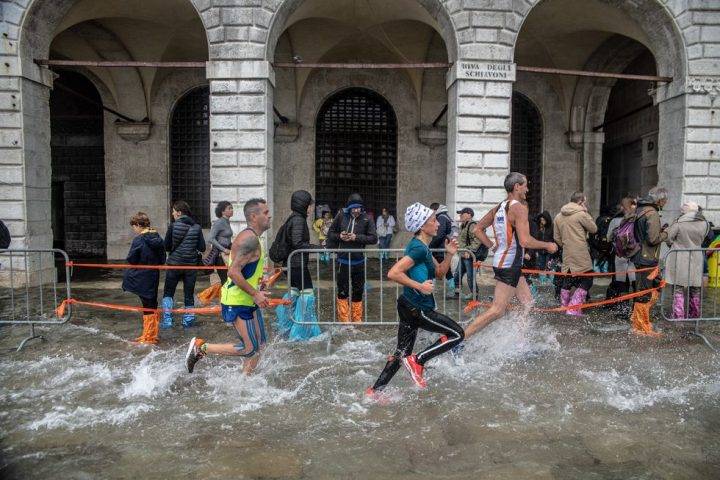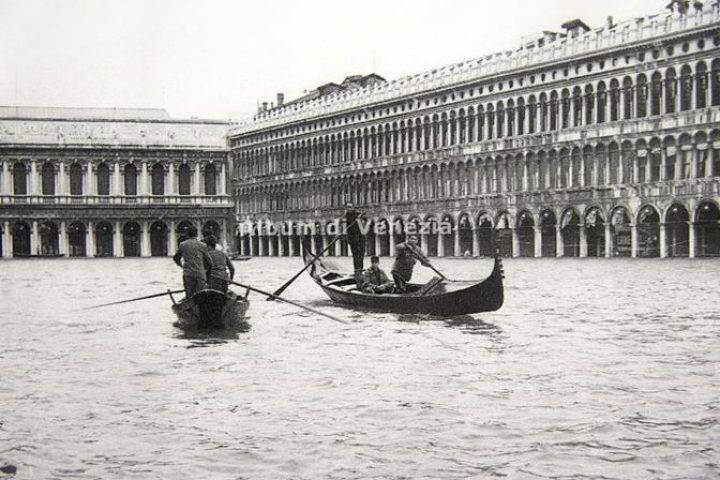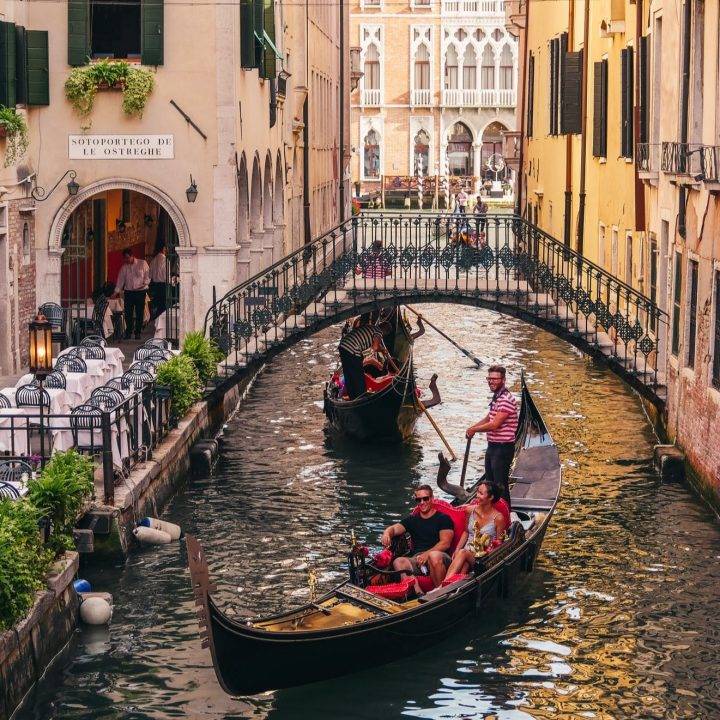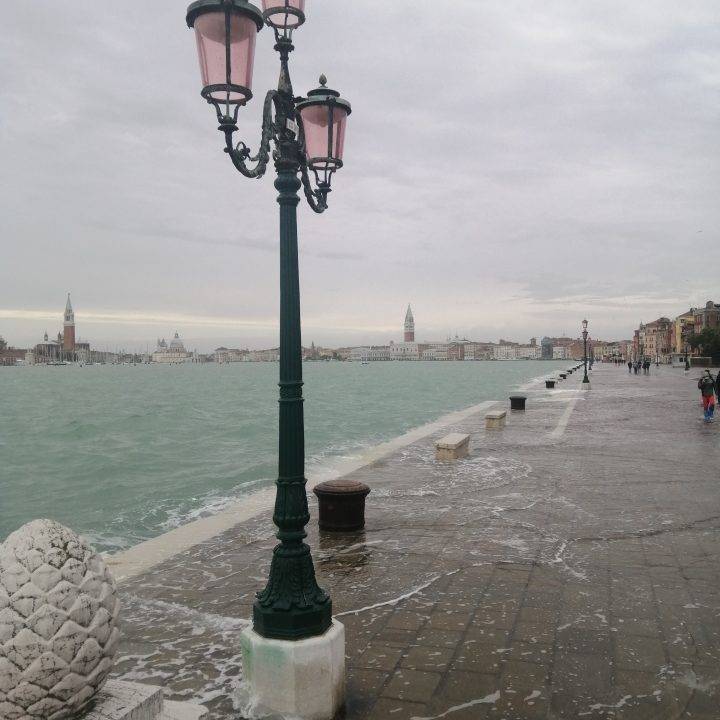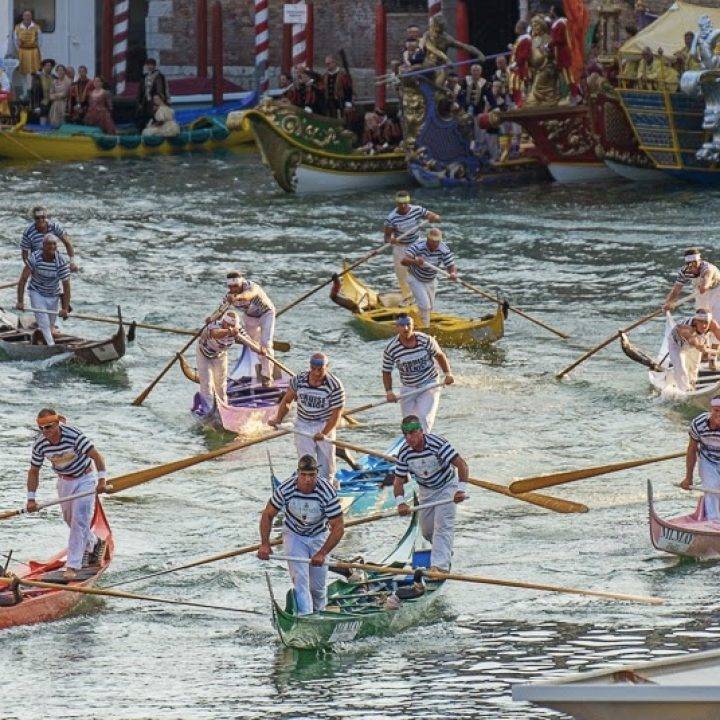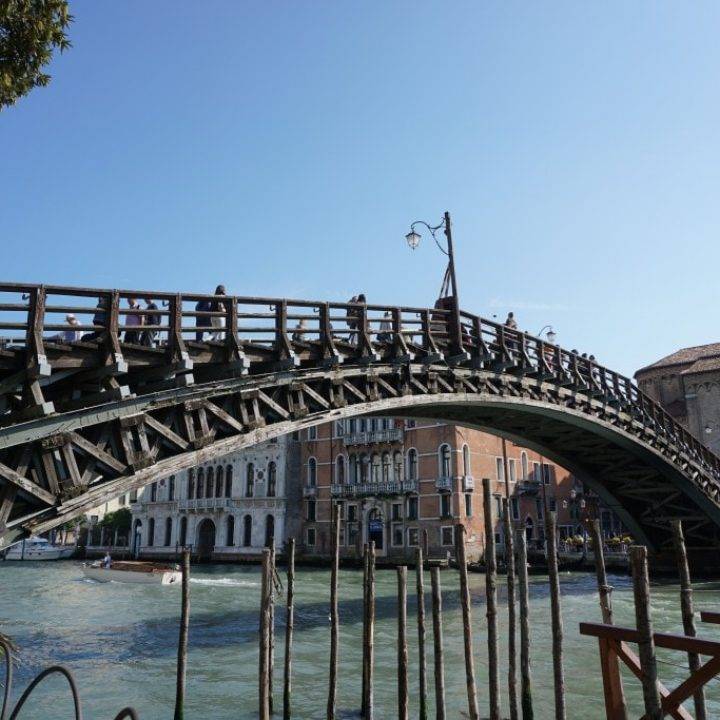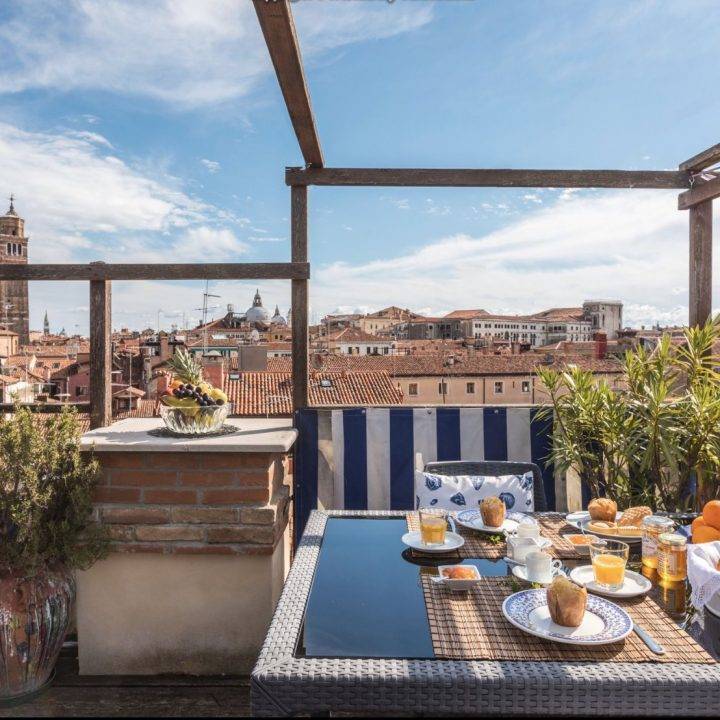In the previous post, I did advocate visiting Venice in November and definitely have not changed my opinion. Despite this, I would be remiss if I did not also mention Acqua Alta. It is most common to encounter this Venetian phenomenon in the wonderful month of November.
Literally translated, Acqua Alta means ‘high water’ and after having witnessed it, you may find this phrase to be an understatement. Venetians just tend to deal with it in stride, and have found ingenious, simple ways of continuing despite the rising tides.
Early in the morning or late at night, you will hear a Siren that can be alarming if you haven’t heard it before. It’s there to let people know how high the water will be and that it can be expected within the next 3 hours. It rings out over the city, the number of tones you hear dictates how high the water is predicted to be. For example, one note means just one 110cm, two notes means 120cm, and it continues like this.
Why does the Acqua Alta happen?
The water is pulled in from the sea by the strong winds and in particular when there is also a full moon. It is also a consequence of our human interventions. Although there are daily tides (some more extraordinary than others) our societal development such as airports limits where the high water can escape. With this, we see flooding more frequently.
In this situation, everyone is in the same boat more or less. The only advantage that a Venetian will have over a visiting tourist is a matter of geography. Venetians already know which streets to avoid or cunning back routes – so as to traverse higher ground. Venice is built on an uneven surface and each part constructed at separate times. This means that certain parts will always be the first submerged whereas others stand tall and only succumb in extreme circumstances.
Beware: RIO-ALTO, translates to mean HIGH RIVER, is in fact a false friend. Although the name has remained, the city has grown up around these spots, making them older and no longer the highest points.
San Marco is also another low point which should be avoided at all costs during Acqua Alta.
Another interesting anecdote is that every Isola (or Sestiere) has its own high point. While this is not always immediately apparent when walking around, you can recognize these areas by the fact that trees are able to grow here. Therefore, San Elena, near Madonna Del Orto, San Giaocomo Del’Orio etc.
What you should do?
Well, it may be worth investing in some waterproof boots if you are here for a week or so. Otherwise, you may be tempted into buying those plastic shoe covers that are sold on the streets as soon as the water arrives. The third option is to slightly alter your daily routine, because the tide will always decrease as the day goes on. Typically, you can be sure that before 11.00 it will be at its highest and then again around 16.00 (4 pm).
History of the Acqua Alta
In 1966, Venice saw the highest Acqua Alta that has been caught on record. The water levels rose to 194 cm, meaning that the whole of Venice was completely submerged (some parts more than others). The real problem was in what the flood uncovered rather than what it destroyed. This was an important wake up call to draw the attention to the potential risks of these extreme Acqua Alta events and how to better prepare building structures for the future.
October 2018
The most recent Acqua Alta was in the last days of October, reaching to heights of 156 cm. We experienced three days of significant water levels. For people on the ground floor or in particularly low areas of the city, this meant water barriers and / or constant pumping. However, considering that Acqua Alta is not a recent phenomenon, most of the buildings are built with it in mind. Water pumps, barriers, high waders, and umbrellas are the high tech equipment that is still used today.
The Venice Marathon was another event during this time that just saw the Acqua Alta as a minor hurdle to overcome, inspiring the rest of us to walk a bit quicker perhaps. (see photo)

